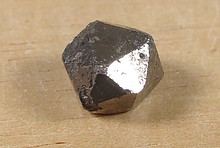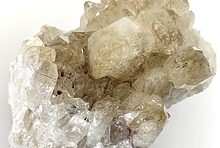Learning CenterWhat is a mineral?The most common minerals on earthInformation for EducatorsMindat ArticlesThe ElementsThe Rock H. Currier Digital LibraryGeologic Time
搜索矿物的性质搜索矿物的化学Advanced Locality Search随意显示任何一 种矿物Random Locality使用minID搜索邻近产地Search Articles搜索词汇表更多搜索选项
╳Discussions
💬 Home🔎 Search📅 LatestGroups
EducationOpen discussion area.Fakes & FraudsOpen discussion area.Field CollectingOpen discussion area.FossilsOpen discussion area.Gems and GemologyOpen discussion area.GeneralOpen discussion area.How to ContributeOpen discussion area.Identity HelpOpen discussion area.Improving Mindat.orgOpen discussion area.LocalitiesOpen discussion area.Lost and Stolen SpecimensOpen discussion area.MarketplaceOpen discussion area.MeteoritesOpen discussion area.Mindat ProductsOpen discussion area.Mineral ExchangesOpen discussion area.Mineral PhotographyOpen discussion area.Mineral ShowsOpen discussion area.Mineralogical ClassificationOpen discussion area.Mineralogy CourseOpen discussion area.MineralsOpen discussion area.Minerals and MuseumsOpen discussion area.PhotosOpen discussion area.Techniques for CollectorsOpen discussion area.The Rock H. Currier Digital LibraryOpen discussion area.UV MineralsOpen discussion area.Recent Images in Discussions
12771
LocalitiesHopffeldboden, Hopffeld area, Neukirchen am Großvenediger, Zell am See District, Salzburg, Austria
20th Feb 2019 06:22 UTCChristian Auer 🌟 Expert
Wouldnt it be fair to add them all into the euxenite group https://www.mindat.org/min-47564.html ?
22nd Feb 2019 06:11 UTCChristian Auer 🌟 Expert
Is it possible to determine them with their xtl end faces as its done by collectors of the Hopffeldboden?
Due to the metamict character I tested one xtls with SEM-EDS:
Nb 18 Y 9 U 1 Ta 1 Gd 1 atom% which would lead me to euxenit-Y
22nd Feb 2019 07:17 UTCKeith Compton 🌟 Manager
22nd Feb 2019 07:42 UTCChristian Auer 🌟 Expert
See kainosite for example. It was erroneously reported from the Hopffeldboden but can be found in the steep Hopffeld Graben locality.
The Hopffeld area is the link between both.
22nd Feb 2019 08:30 UTCKeith Compton 🌟 Manager
What then is the locality ... Hopffeld .. is this a place ? This is also suspect to me.
I haven't seen "Hopffeld area" in the literature either.
When searching Google for example the only meaning ful references to these two appear to be Mindat and that doesn't auger well to me at least.
I would propose to remove both 'Hopffeld area" and "Hopffeld".
22nd Feb 2019 13:48 UTCJohan Kjellman Expert
thus YNb2 positive charge 13 requires 6.5 O
euxenite and aeschynite minerals are YTiNbO6
your formula suggests a pyrochlore group mineral ◻YNb2O6(OH,F)
why not consult the article connected to some of these images?
Non-metamict REE-Nb-oxides of alpine origin are not unheard of - how old/young is this deposit?
traditionally, for example in Norway, euxenite an aeshynite crystals, both orthorhombic, are separated by morphology.
cheers
23rd Feb 2019 11:16 UTCJohan Kjellman Expert
yes all these species belong to euxenite group
distinction between species ought to have been done based on chemistry - eds?
cheers

3rd Mar 2019 07:28 UTCUwe Ludwig
Rgds.
Uwe Ludwig
3rd Mar 2019 19:35 UTCFred E. Davis
Ercit, T. S. 2005. Identification and Alteration Trends of Granitic-Pegmatite-Hosted (Y,REE,U,Th)-(Nb,Ta,Ti) Oxide Minerals: A Statistical Approach. Canadian Mineralogist 43:1291-1303.
4th Mar 2019 07:21 UTCChristian Auer 🌟 Expert
4th Mar 2019 10:47 UTCJohan Kjellman Expert
To go back to your original questions. All the minerals belong as you say to the euxenite group, which has the general formula of AB2O6, and the species division is made by chemistry. For all these species Y is the dominant cation on the A-site which thus has a charge of 3. For charge balance reasons the two cations on the B-site have then an average charge of 4.5, which is usually occupied by one cation Ti and one pentavalent, Nb or Ta. For compensations of minor substitutions the Ti or Nb and Ta may dominate the B-site.
The species division is then idealized.
euxenite Y(NbTi)2O6
polycrase Y(TiNb)2O6
tanteuxenite Y(TaTi)2O6
The answer to your question why these are found in different galleries, I suppose then, is that people made chemical analyses indicative to the species in question. There is no way that these species, especially if they are metamict, can be directly indicated by x-ray or morphology. But, of course, indirectly if someone has made a systematic investigation that correlates morphology with chemistry.
cheers




版权所有© mindat.org1993年至2024年,除了规定的地方。 Mindat.org全赖于全球数千个以上成员和支持者们的参与。
隐私政策 - 条款和条款细则 - 联络我们 - Report a bug/vulnerability Current server date and time: 2024.4.27 05:02:17
隐私政策 - 条款和条款细则 - 联络我们 - Report a bug/vulnerability Current server date and time: 2024.4.27 05:02:17













